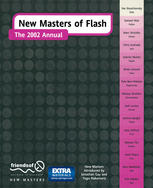

Most ebook files are in PDF format, so you can easily read them using various software such as Foxit Reader or directly on the Google Chrome browser.
Some ebook files are released by publishers in other formats such as .awz, .mobi, .epub, .fb2, etc. You may need to install specific software to read these formats on mobile/PC, such as Calibre.
Please read the tutorial at this link: https://ebookbell.com/faq
We offer FREE conversion to the popular formats you request; however, this may take some time. Therefore, right after payment, please email us, and we will try to provide the service as quickly as possible.
For some exceptional file formats or broken links (if any), please refrain from opening any disputes. Instead, email us first, and we will try to assist within a maximum of 6 hours.
EbookBell Team

5.0
38 reviewsFlash has upped the standard for web motion graphics and has been welcomed with open arms on account of its powerful new ActionScripting capabilities. Following the phenomenal success of New Masters of Flash, the Flash Annual will bring together a new collection of the hottest Flash design talents on the planet, all of whom have grabbed attention in the preceding year.
New Masters of Flash: The 2002 Annual gives competent web artists inspiration for cutting-edge Flash design techniques, as well as hard tutorial information on how to build top class effects. The format builds on the best of the original best-selling title while improving in areas where the first volume was weaker, (e.g. generic customizable code examples), while the talents, the inspirations and effects are all of the moment and represent the mature and expert deployment of the staggering new capabilities of Flash 5 ActionScript.
The Flash Annual format: The Intro is a series of 3 "field-report" essays written by key New Masters from the previous year covering new talents, new techniques and new trends. The main body of the book is then an evolution from the original format. This time, as well as the inspiration and tutorial sections, we add a third section to each chapter, headnotes. Part summary, part chapter commentary, part code overview, the Headnotes section teases out the reusable and generic elements of the previous tutorial and suggests ways forward for the reader.